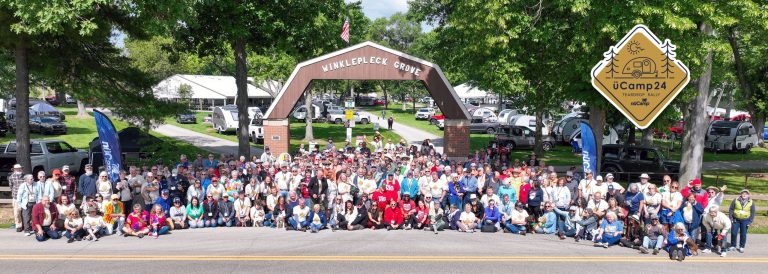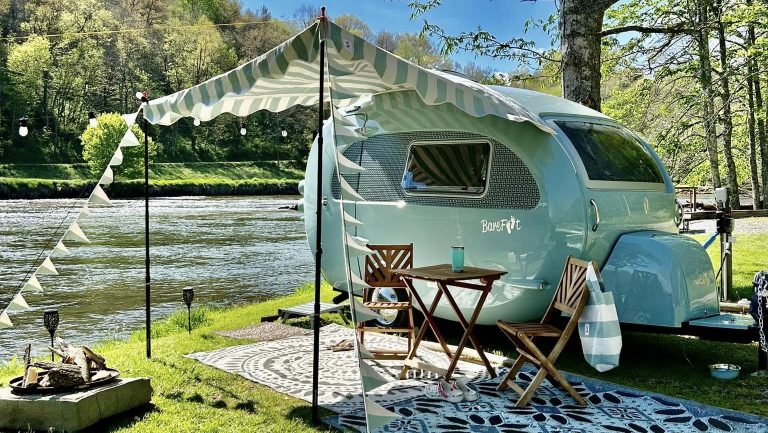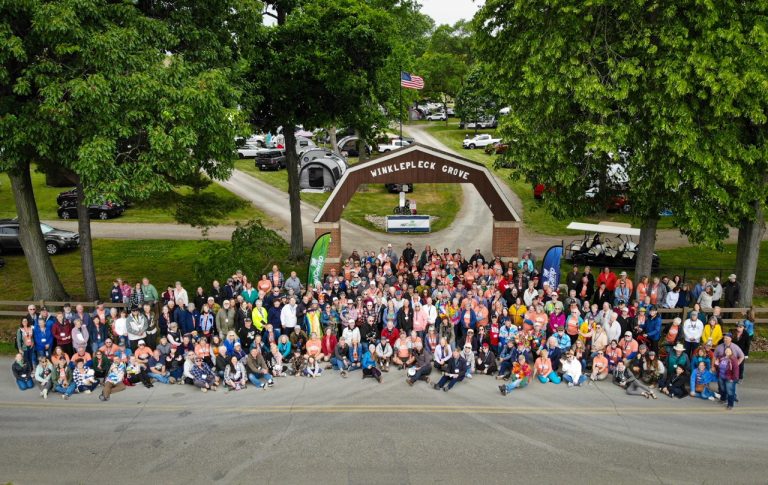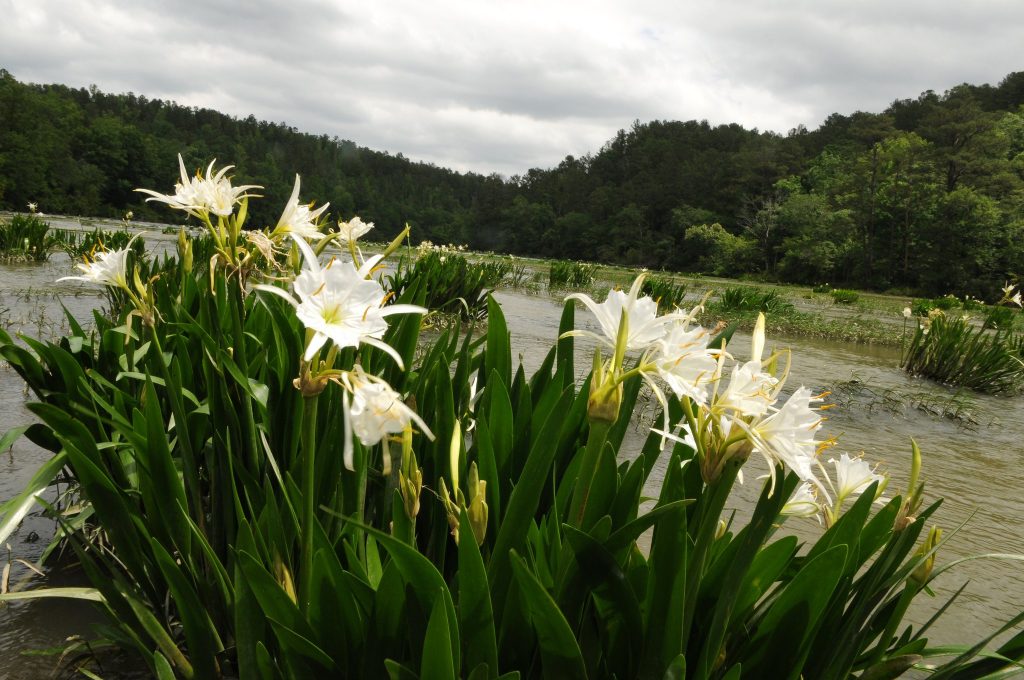Alabama is home to 11 national wildlife refuges, one of which it shares with Mississippi. Each refuge has a unique identity, and all are worth a visit. While most national wildlife refuges offer free admission, about 30 refuges do charge a small entry fee. For more information, visit the Federal Recreational Lands Pass page.
Also, check for updates regarding COVID-19 restrictions and guidelines at the website for the wildlife refuge you’ll be visiting. General COVID-19 information for the U.S. Fish and Wildlife Service is available here.
Looking for a place to stay while visiting a refuge in Alabama? Check this list of the RV Parks & Campgrounds from Campground Reviews.
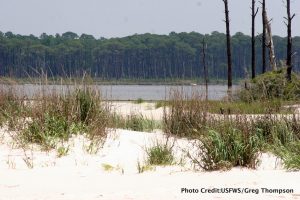
Bon Secour National Wildlife Refuge
12295 State Highway 180, Gulf Shores, AL 36542
Phone: 251-540-7720
Bon Secour NWR has some of Alabama’s last remaining undisturbed coastal barrier habitat. During the fall and spring migration, the refuge is a significant stopover and staging habitat for neotropical migratory songbirds. Other wildlife that makes their home at Bon Secour is the endangered Alabama beach mouse as well as loggerhead, green, and Kemp’s Ridley sea turtles. Entrance to Bon Secour National Wildlife Refuge and public programs conducted by the refuge are free. Activities to enjoy on the refuge’s 7,000 acres of coastal lands include trail-walking, bird-watching, fishing, and boating. There is a prohibition against bringing pets onto the refuge, although service animals for persons with disabilities are permitted. More information regarding pet policy information and exceptions is available here.
Choctaw National Wildlife Refuge
13723 Bluff Lake Road, Brooksville, MS 39739
Phone: 662-323-5548
Choctaw NWR is bordered on the east by the Tombigbee River and divided into three sections by two small creeks, Okatuppa and Turkey. The 4,218-acre refuge was established as a protected wintering area for waterfowl and for wood duck production. Other wildlife includes wood storks, white-tailed deer, gray squirrels, turkey, raccoons, opossum, American alligator, and beaver, with a nesting pair of eagles calling the refuge home each winter. Activities include wildlife observation, hunting (gun and archery) and fishing in designated seasons and areas, canoeing, and kayaking. Check with the refuge regarding any needed licenses or regulations for hunting or fishing. Pets are allowed in the refuge but must be on a leash.
Eufaula National Wildlife Refuge
367 Highway 165, Eufaula, AL 36027
Phone: 334-687-4065
Eufaula NWR is an 11,184-acre refuge about seven miles north of Eufaula, AL, that’s home to almost 300 species of birds, 40 species of mammals, and many species of amphibians, reptiles, and fishes. Eufaula NWR is a designated site on the Georgia Southern Rivers Birding Trail and the Wiregrass Birding Trail in Alabama. The refuge’s eight-mile wildlife drive provides visitors with views of upland and wetland habitats and includes a wildlife viewing platform and observation tower. The drive is also suitable for hiking and biking, with a second one-third mile walking trail located near the main entrance. Other activities include hunting and fishing. Go here for information about hunting permits or download the Eufaula NWR Hunting/Fishing Regulations & Permit brochure.
Grand Bay National Wildlife Refuge
6005 Bayou Heron Road, Moss Point, MS 39562
Phone: 228-475-0765
Grand Bay NWR, located in coastal Mississippi and Alabama, was established in 1992 with the goal of protecting one of the largest expanses of pine savanna remaining in a relatively undisturbed state. Visitors to the 10,188-acre refuge are encouraged to begin their tour at the Grand Bay Coastal Resources Center’s interpretive center, open from 9:00 a.m. to 3:00 p.m. Monday through Friday. (The center is closed on all state holidays.) There are no fees to enter the refuge or tour the center. Activities include hiking on two nature trails, wildlife observation, hunting during designated hunting season, fishing, and boating. Go here for hunting and fishing license information. More information on rules and regulations are available here.
Wheeler National Wildlife Refuge Complex
Refuge Complex headquarters: 2700 Refuge Headquarters Road Decatur, AL 35603
Phone: (256) 353-7243
The Wheeler National Wildlife Refuge Complex includes the following National Wildlife Refuges: Wheeler, Sauta Cave, Watercress Darter, Fern Cave, Key Cave, Cahaba River, and Mountain Longleaf.
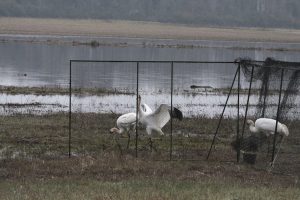
Wheeler National Wildlife Refuge
3121 Visitor Center Rd, Decatur AL 35603
Phone: 256-350-6639
Wheeler NWR was originally established as a waterfowl refuge but is now home to a wide diversity of wildlife including 295 bird species, 115 species of fish, 74 species of reptiles and amphibians, 47 species of mammals, 38 species of freshwater mussels, and 26 species of freshwater snails. Go here for hours for the refuge office and Visitor Center. The refuge itself is open during daylight hours, with no entrance fees charged. Activities include hunting, fishing, wildlife viewing, boating, biking, and hiking. Horseback riding is allowed on all roadways open to vehicles within the refuge, but horses are not allowed behind any closed gates.
Sauta Cave National Wildlife Refuge
Sauta Cave NWR is located just above the Sauty Creek embayment on TVA’s Guntersville Reservoir, 7 miles west of Scottsboro in Jackson County, AL, with an entrance gate on the south side of U.S. Highway 72. The 264-acre refuge is open from sunrise to sunset and provides activities including hunting, wildlife viewing, and hiking, with all refuge facilities free to the public.
Watercress Darter National Wildlife Refuge
Watercress Darter NWR, located in Bessemer, AL, is a 24-acre mix of ponds, mixed pine-hardwood forest, and a residence. It’s home to the watercress darter and other wildlife. The refuge is unstaffed and administered by Mountain Longleaf NWR.
Fern Cave National Wildlife Refuge
Fern Cave National Wildlife Refuge is located on the western slope of Nat Mountain. The 199-acre refuge is currently unstaffed and all management activities are carried out by Wheeler NWR staff. While Fern Cave itself is not open to the public, other portions of the refuge are, with the refuge home to 200 species of birds, mammals, fish, reptiles, and amphibians, as well as the largest wintering colony of gray bats in the United States. There are no entrance fees at Fern Cave National Wildlife Refuge, which is open daylight hours only, year-round.
Key Cave National Wildlife Refuge
Key Cave NWR is located about five miles southwest of Florence, AL, with no entrance fees charged to access the 1,060-acre refuge. It’s open to the public from dawn to dusk, although motorized vehicles without a valid handicapped permit are not permitted. Parking information is available here. The refuge protects the only known population of endangered Alabama cavefish and is also home to up to 40,000 endangered gray bats. Activities on the refuge include hunting, hiking, and bicycling on 2.5 miles of roads/trails and birdwatching including site #9 of the North Alabama Birding Trail.
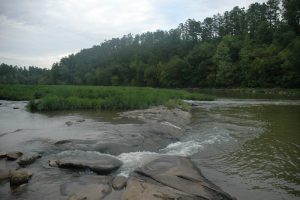
Cahaba River National Wildlife Refuge
Cahaba River National Wildlife Refuge is located in Bibb County, AL, approximately six miles east of West Blocton on County Road 24. The 3,500-acre refuge is home to five federally listed species including the Cahaba shiner, goldline darter, round rocksnail, and cylindrical lioplax snail. The Cahaba River itself stretches for almost 200 miles and is Alabama’s longest free-flowing stream, with more than seven miles within the refuge. Activities include hunting, hiking, fishing, paddling, and wildlife observation. The refuge is only open to the public from sunrise to sunset, with the exception of permitted hunting seasons.
Mountain Longleaf National Wildlife Refuge
Mountain Longleaf NWR is in northeastern Alabama, approximately 65 miles east of Birmingham and 90 miles west of Atlanta. The 9,016-acre refuge is rich in wildlife and recreation opportunities. The gray bat and more than 68 species of migratory birds call the refuge home, which is also where you can find the white fringeless orchid and spring seeps as well as the longleaf pine forests. Activities include hunting, hiking, and wildlife viewing.
Recent Articles
